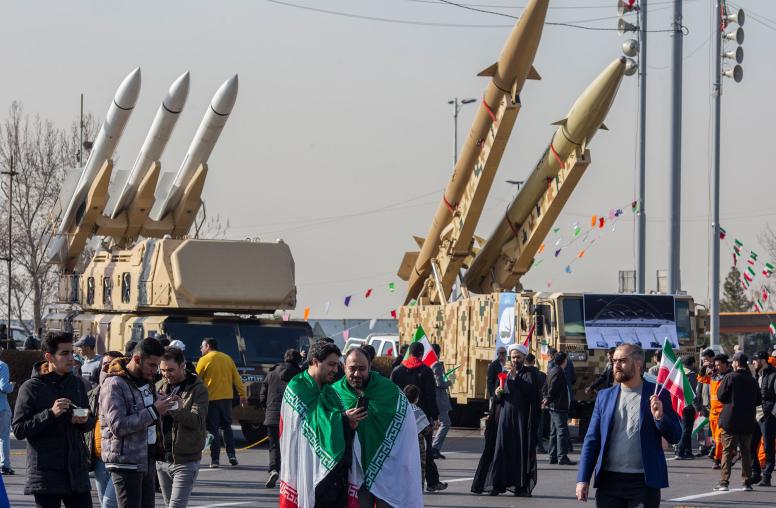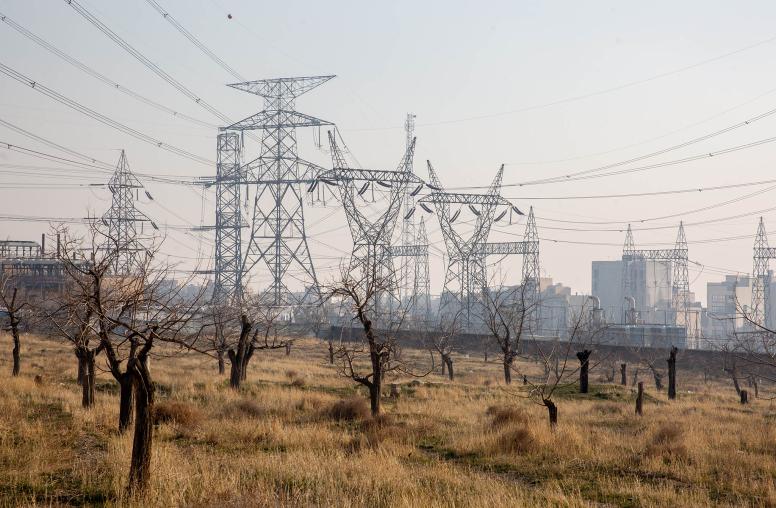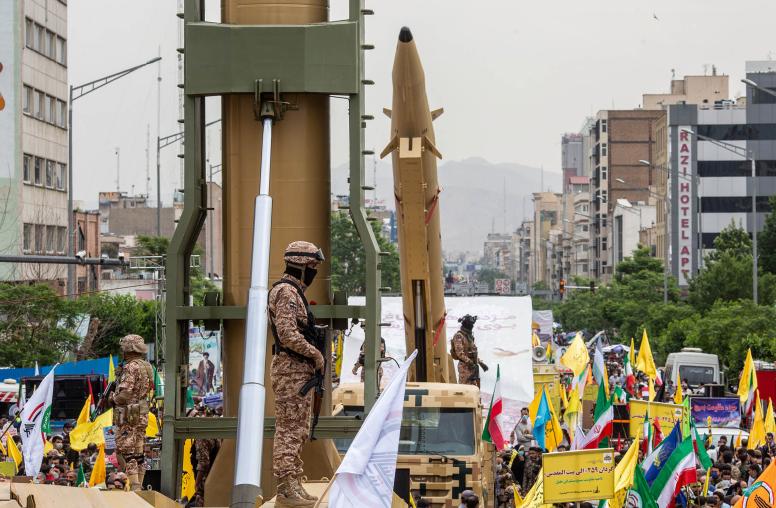The United States Weighs Its Options in the Face of Iran’s Provocations
Deadly strike by Iran-backed militias on U.S. troops in Jordan signals an expansion of the Middle East war.
Three U.S. troops were killed and at least 34 injured in a drone strike on a U.S. base in northeast Jordan on January 28. The attack comes against a backdrop of rising regional tensions since the outbreak of conflict in Gaza following the October 7 Hamas terrorist attack on Israel.

USIP’s Mona Yacoubian and Sarhang Hamasaeed examine the significance of the drone strike, a likely U.S. response and the Iran-backed proxies that are behind such attacks.
What is the significance of the January 28 drone strike?
Yacoubian: The January 28 attack — claimed by the Islamic Resistance in Iraq, a loose coalition of Iranian-backed militias — is notable in several respects. While there have been more than 150 attacks on U.S. targets in Iraq and Syria since October, this is the first strike that has killed U.S. servicemembers. The U.S. deaths cross an important escalation threshold, with President Biden vowing to respond.
The strikes hit Tower 22, a small U.S. military installation in northeast Jordan, expanding the arena of confrontation between the United States and Iranian-backed militias to Jordan for the first time. Not only does the targeting in Jordan mark a widening of conflict in the region, but it also constitutes a dangerous development for the Hashemite Kingdom which is already pressured by the conflict in Gaza.
The timing of the strike is also notable, as it occurred on the heels of Tehran’s first direct engagement in the region’s growing turmoil taking place earlier this month with its strikes on Syria, northern Iraq, and Pakistan in what appears to be an escalation by Iran. The Tower 22 attack also comes against a backdrop of reports that the United States is weighing the option of withdrawing its forces from Syria, despite U.S. government denials. The United States is also under growing pressure to pull its troops from Iraq following the January 4 U.S. drone strike on an Iranian-backed militia leader in Baghdad. Finally, the strike in Jordan took place at a delicate moment in the negotiations to free the remaining Israeli and American hostages held by Hamas in Gaza.
How will the United States respond to the attack?
Yacoubian: Given the U.S. casualties that occurred, this latest attack on U.S. forces demands a more forceful U.S. response. However, U.S. planners are likely seeking to develop a response that reestablishes deterrence without tipping the region into a wider conflict. This balancing act underscores the challenge of how to deter non-state actors acting on behalf of a state sponsor and using asymmetric means to strike U.S. targets.
Iran has denied involvement in the attack, following a pattern of Iran hiding behind various proxy groups and the shadowy circumstances under which such strikes have been undertaken. Both the United States and Iran assert they are not interested in a wider war and yet the escalating pace and breadth of attacks underscores the need for the United States to assert itself and deter Iran or its proxies from further escalation.
Some are calling for direct U.S. strikes on Iran, but Biden administration officials are likely reluctant for fear of widening the conflict. The drone strike was reportedly launched from Syria, so the United States may opt to respond in Syria, targeting Iranian personnel, such as the Iranian Islamic Revolutionary Guards Corps.
What is the Islamic Resistance in Iraq? What is its connection to Iran?
Hamasaeed: Today, the Islamic Resistance in Iraq commonly refers to Iran-backed armed groups — also called militias — that conduct drone and missile attacks against U.S. interests in Iraq, including Iraqi bases that host military personnel from the United States and the Global Coalition to Defeat ISIS and the U.S. Embassy in Baghdad.
The attacks by these groups had paused after the formation of the Iraqi government under the premiership of Mohammed Shia al-Sudani in late 2022. However, the attacks resumed last October under the pretext of solidarity with the Palestinians and in response to the United States backing Israel.
In the immediate years following the 2003 U.S.-led intervention in Iraq, Sunni groups fought against U.S. and coalition troops under the banner of Islamic resistance. These groups evolved into the Islamic State of Iraq in 2006 and the Islamic State of Iraq and Syria (or al-Sham) in 2013. However, the concept of Islamic resistance in Iraq and the Middle East region is more associated with the different predominantly Shia groups that Iran supports in Iraq, Lebanon, Syria and Yemen. Who would qualify as part of the Islamic Resistance in Iraq varies depending on who you ask and when. Groups like Harakat al-Nujaba operate more publicly, while others like Ashab al-Kahf are more in the shadows and may change their name after a while.
Applying a wider definition, many Iraqis and Iraq experts consider members of the Iraqi Popular Mobilization Forces, which has been legalized as an entity reporting to Iraq’s commander in chief, as also part of Iran’s sphere of resistance. The actors in this Iranian sphere have advanced arms, economic and media capabilities that they leverage widely.
How does this latest attack fit into the broader escalation of the conflict across the region?
Hamasaeed: The Sunday attack in the Syria-Jordan border region on U.S. troops that led to the death of three U.S. service members and injured 34 others is a dangerous escalation, crosses a U.S. red line and increases the risk of a regional war.
Hostilities have expanded significantly since Hamas attacked Israel on October 7. In addition to Gaza and Israel, Lebanon, Syria, Iraq, Yemen and the Red Sea have become domains of violent action. A broad set of Iran-backed actors — such as Lebanese Hezbollah, the Houthis in Yemen and Harakat al-Nujaba in Iraq — conducted attacks in different parts of the region. Iran itself struck targets in Iraq, Pakistan and Syria. In addition to deploying its own military assets and striking military targets in Iraq and Syria, the United States worked with allies and formed Operation Prosperity Guardian to ensure freedom of navigation in the Red Sea and has been striking Houthi targets inside Yemen in response to their armed attacks. The United States also redesignated the Houthis as a terrorist organization. Weapon types, frequency of attacks and casualties have also been on the rise.
Although it is denying it, Iran is accused of being the mastermind and enabler of these attacks and their escalation. Neither Iran nor its allies seem to be deterred by threats, diplomatic attempts, military strikes such as in Iraq and Yemen or the terrorist designation of the Houthis. This is all cause for real concern.



